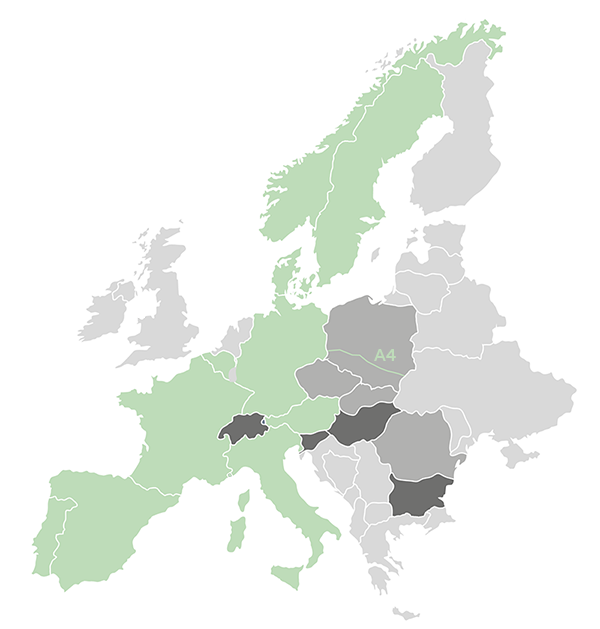Toll Payment Methods in Europe
In recent years there have been significant developments in the world of tolls and traffic charges on a Pan-European level.
For the first time, we now are now seeing both the public and private sectors driving positive change in relation to road charging systems across Europe. The incorporation of different types of charging based on the category of vehicle emissions, the emergence of new consolidated technologies and the incorporation of new countries are just a few examples.
In particualr, there are two over arching factors that have revolutionised the toll charging sector.
Transition to multi payment platform acceptance
Until recently and with the exception of cash and credit cards, many countries were operating a single payment method for domestic tolls, for example the Caplis Card in France.
Today, the market has been substantially commercialised, and in many ways as a result of European policy and competition standards. As a result, European transport companies can now choose from a wide range of payment options and suppliers across Europe to suit their specific needs.
There are some countries where these changes have been very evident, such as in Belgium, Germany and Austria where these countries have opened their platforms to third party providers, customers can now choose from a single supplier reducing the number of providers and contracts that they have to manage.
Evolution from Toll Card to Cross Border Digital Payment
These changes have occurred in phases, the first occurred with the creation of electronic devices which facilitated the automatic payment of tolls without having to stop and pay. These devices used DSRC (Direct Short-Range Communication) technology, where the device communicates with sensors located across the toll network using shortwave communications to collect the toll data.
Alternatively, some systems operate with GNSS (Global Navigation Satellite System) such as the Toll Collect network in Germany, where the KM charging system is applied by tracking a vehicles movement using GPS and applying the relevant charges.
Thanks to the international European Electronic Toll Services (EETS) agreement which promotes and regulates the ongoing development of road charging across Europe, transport companies can now access a single toll payment device that works across all major road toll platforms in Europe, helping to reduce administration (single payment invoice), increased security and control with Over The Air (OTA) technology for configuring and blocking a devices.
EETS Roadmap – Where and When?
The current map can be split into 3 categories, these are existing networks, planned integration (short term) and future expansion (medium/long term)
Existing networks (currently active):
| Spain | Italy | Norway |
| France | Austria | Denmark |
| Portugal | Poland (A4) | Sweden |
| Belgium | Germany |
Planned Integration 2020/2021:
| Slovenia | Switzerland |
| Hungary | Bulgaria |
Future Expansion:
| Poland | Slovakia |
| Romania | Czech Republic |
From Vrio we offer services and advice so that you can manage your tolls in Europe and move freely on all roads in any country effectively, safely and cost-effectively for your company.





